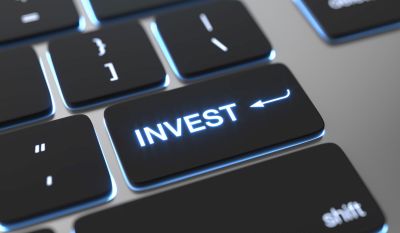Understanding Risks and Returns in Business [Using This Simple Analogy]

One major concept that business school students need to grasp is risks and the associated returns that you’ll experience when investing future business capital.
All financial matters require some form of risk – opening a business is certainly one of them – and it’s up to you to learn how to measure those risks against potential future returns to find out if they are worthy of your time and attention.
Nobody wants to lose their hard-earned money. Nobody wants to shell out their entire life savings only to watch it get flushed down the toilet because they did not properly measure risks against potential returns. In fact, so many people fail to realize the relationship between the two.
Today, we’re here to teach business school students how to properly measure the risks and rewards of potential business investing opportunities.
Once you’ve mastered this skill, you’ll have a much better chance at navigating rough business waters while you weigh the pros and cons of potential money-making investment opportunities.
If you, however, feel you’ll be needing a guiding hand, you can reach out to a professional financial advisor such as My Wealth Solutions.
Trade-Offs and Their Relationship between Risk and Return
From a business standpoint, risks and their correlated returns are typically represented by a trade-off. Generally speaking, the greater the risk you are willing to take, the greater the potential reward available because of taking the said risk.
As an example, let’s use lottery tickets to help explain this concept.
Lottery tickets are a high-risk proposition. The odds of winning a state lottery are more than 100,000,000 to 1. The odds are even greater for multistate lotteries like Powerball and Mega Millions. Quite frankly, you’ll have a better chance of getting struck by lightning than winning the lottery. At least that’s true when talking about the big multi-million dollar jackpots.
So, you have an extremely high-risk proposition. More than likely, you are giving away one dollar, two dollars, or whatever amount you tend to invest when hoping to win. It’s very rare to receive anything back on this “investment.”
On the other side of the coin, we’ll use savings accounts as our lower risk example.
Opening a savings account is a low-risk proposition. The bank will provide a small percentage interest rate that you will earn for leaving your money in the savings account. Since interest rates are so low, you should not expect to make a huge amount of money. In fact, you’ll hardly make anything at all. But you aren’t putting your money at risk to earn this meager return.
These two examples should clear up the trade-off between risk and return. The more you risk, the greater the potential return. And the less risk, the less reward.
Analyzing Less Risk and Lower Returns
When in business, you’ll face decisions that will require you to make an upfront investment. Some people prefer to play it safe and take on less risk knowing full well that they are going to make lower returns. This is perfectly satisfactory as long as you are willing to accept that your business is never going to hit a home run this way.
In our next example, let’s say your company is thriving and you have a lot of excess capital sitting in your business account collecting less than pennies on the dollar.
Some business owners are perfectly satisfied with this situation and they are happy to receive their skimpy interest payments each month. Since their business is thriving, they aren’t worried about making additional capital through other investments.
Other business owners, on the other hand, would take that money and invest it in the stock market or other volatile investments with bigger potential rewards. If the market goes south, they could easily end up losing much of their company’s working capital – also known as profits!
At the end of the day, taking your risk and return temperature is necessary in order to figure out your investing style. Some people are happy to spend everything buying Lotto tickets!
Others like to play it safe and keep their money in low-interest paying savings accounts. It all comes down to who you are and your personal tolerance for risk.
So how much risk do you like to take? I would love to hear your thoughts on this article in the comments below.
Cheers!




![5 Investments That Aren’t Stocks [And Why You Should Consider Them]](https://stumbleforward.com/wp-content/uploads/2018/05/euro-penny.png)
